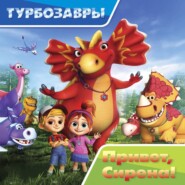По всем вопросам обращайтесь на: info@litportal.ru
(©) 2003-2025.
✖
Management practices of Russian companies. Vol.2
Настройки чтения
Размер шрифта
Высота строк
Поля
Andrey reflected on how the new strategy should take into account the specifics of the competitors’ anti-crisis activity and what measures to strengthen the competitive advantage, both on domestic and international routes, are likely to be proposed by consultants.
RESTARTING THE AIR STRATEGY
Once the board has approved the new strategy, it will need to work extensively to agree the new agenda with all stakeholders, break down the goals and KPI and communicate them to all members of Aeroflot group. For each budget figure, convincing arguments, calculations, assessments, and proposals for organisational change will be required.
Going into the meeting with Kate and Trevor, Andrey reflected that today’s meeting on key changes to Aeroflot’s strategy was crucial, but only the first step on the road to new goals. What will this first step be, how high can and should Aeroflot fly in the long term, and which new destinations should form the basis of the sustainable development of the company, one of the world’s leading air carriers?
NATALIA GUSEVA
Professor, Department of Strategic and International Management, HSE Graduate School of Business
#Cross-culturalManagement #ModernManagementTrends
MARIA DVORYASHINA
Guest lecturer, Department of Marketing, HSE Graduate School of Business
#MarketingStrategies #MarketingMetrics
APPENDIX 1
GROUP OF AEROFLOT COMPANIES
Aeroflot[4 - https://www.aeroflot.ru/ru-ru/about/aeroflot_today/materials, https://www.youtube.com/watch?v=Zf1_T4ruZ68 (video)] is a group of three key carriers, offering customers a wide choice of solutions through its extensive route network and various carriers, ranging from the low-cost carrier Pobeda and the regional carrier Rossiya, which has the social mission of connecting the Russian regions, to the premium carrier Aeroflot.[5 - https://www.aeroflot.ru/media/aflfiles/media/strategy/strategy_2028_rus.pdf]
Aeroflot’s vision is to remain the uncontested leader in domestic and international air travel for Russia and be among the best airlines in the world, combining dynamic development and high reliability with quality service. The implementation of the company’s main objective is based on a system of values, such as client confidence, results for shareholders, teamwork, and social responsibility.[6 - https://www.aeroflot.ru/ru-ru/about/aeroflot_today/ourbrand] By early 2020, Aeroflot was the holder of the most prestigious international awards in the aviation industry:[7 - https://www.aeroflot.ru/ru-ru/about/aeroflot_today/aeroflot_history/2010_2019/2019]
• “Five stars” for punctuality of flights from the British analytical agency OAG. Among those receiving the maximum score, Aeroflot was the only airline in Russia and the largest in Europe in terms of traffic volume.
• For the eighth time, Aeroflot has been named ‘Best Eastern European Airline’ by Skytrax World Airline Awards.
• Aeroflot won the two main categories in the World Travel Awards 2019 – Leading Airline Brand and Best Business Class. The airline has maintained its status as the most recognisable brand in global aviation for three consecutive years, remaining the first and only holder of this title from the World Travel Awards in history.
LUFTHANSA GROUP
The Lufthansa Group[8 - https://www.lufthansa.com/ru/ru/lufthansa-group-star-alliance-and-partner-airlines, https://www.youtube.com/watch?v=DjYfOvRyZ1E (video)] is an international airline group represented by European network airlines, low-cost airlines with direct flights without connections and companies providing services to the aviation industry. The group includes Deutsche Lufthansa AG, Germany’s flagship carrier, Swiss International Airlines, Austrian Airlines, Brussels Airlines, and the low-cost carrier Eurowings.
Lufthansa Group’s main priority is to combine an attractive route network, the highest quality of service, and affordable prices in the economy segment. By investing in technology, the company aims to make its customers’ journeys more comfortable: “Passengers may not notice it, but they will feel it.”
Lufthansa Group is the founder of the Star Alliance network, which was established in 1997 as the first global airline alliance to offer international reach, recognition, and seamless service to international travellers. Its recognition by passengers has been acknowledged with numerous awards, including Air Transport World Market Leadership Award and Best Airline Alliance by Business Traveller Magazine and Skytrax.
AIR FRANCE-KLM GROUP
Air France-KLM Group[9 - https://www.airfranceklm.com/fr/groupe/atouts, https://www.youtube.com/watch?v=Zf1_T4ruZ68 (video)] is the world’s largest player in the air transport market and the leading group in intercontinental departures from Europe. Its core businesses are passenger transport, cargo, and airline services. The group comprises Air France, KLM Royal Dutch Airlines, Transavia, Air France KLM Martinair Cargo, and Air France Industries KLM Engineering & Maintenance. Inspired by the French spirit, the alliance is “a detail-oriented and mindful global airline, turning travel into moments of pleasure and elegance.” The Air France-KLM Group offers its passengers enhanced comfort, prioritises fuel economy and meets its commitment to sustainable development. The Group’s commitment to society and the environment is a key priority in its development, social progress and environmental friendliness. Air France-KLM is mobilising around its four key development priorities. These are reducing its environmental impact, integrating sustainability into its products and services, promoting a responsible human resources policy, and contributing to the development of the territories in which the Group operates.
APPENDIX 2MAIN OPERATIONAL AND FINANCIAL PERFORMANCE INDICATORS IN 2020
Source: Created by authors based on annual reports of the companies for 2020.[10 - ¹ Converted at the weighted average exchange rate of the Euro (Central Bank) in 2020 (€1 = 82.4488) and in 2019 (€1 = 72.5021).]
AEROFLOT: IFRS OPERATING AND FINANCIAL RESULTS FOR 6M 2020
KEY PRODUCTION INDICATORS
KEY FINANCIAL INDICATORS
REVENUE
Source: Created by authors based on annual report of Aeroflot for 2020 https://ir.aeroflot.ru/en/reporting/annual-reports/ (https://ir.aeroflot.ru/en/reporting/annual-reports/)
Case № 0012-2-1
FOOD ROAD TO YANDEX: WHAT DOES A FOOD TECH STARTUP DO TO BECOME A PART OF A NATIONAL IT GIANT?
G. Minnigaleeva, M. Maron
The case presents a typical situation an entrepreneur faces when he/she develops the business and then decides to sell it. The text reveals real-life challenges, which are quite usual for beginning entrepreneurs around the world. It is based on a story of a successful Russian foodtech startup and allows analyzing a range of questions related to strategic choices as they were evolving in real life.
The case may be used for the students of entrepreneurship at the bachelor and master levels, as well as MBAs. Depending on the students’ level, they may practice market analysis, a startup valuation, strategic decisions, or choice of strategy and materials for a pitch. The case is based on the data from field research (interviews with one of the founders) and information from open sources. Additionally to the compact case, a sincere and detailed video-interview with Sergey Polissar (co-founder) is available. The interview reveals more details about the challenges and solutions, which shaped the young company.
On a dark November night of 2017, Maxim Firsov and Sergey Polissar were still working on a presentation of their foodtech startup they had been nurturing in preparation to sell. Eventually, the Russian IT giant Yandex became interested after the endless caravan of fruitless pitches to other businesses. Yandex was a public company and the 4th most popular search system in the world in 2014 according to the number of search requests. It offered over 50 different online services and its market capitalization was at 10.73 bln dollars in 2017. Now, the question was how much this company would actually value the ideas the friends had generated over the past year.
FOOD, CLEANING OR MANICURE: WHICH VENTURE WOULD EVENTUALLY BRING MORE MONEY?
Sergey’s mind flashed back to the days when he had only been conceiving an idea of a startup. He had been the Vice President of Business development at Lamoda.ru, one of the largest Russian online clothes stores, and had been happy to realize that a good colleague and friend of his, Maxim, had also been thinking of leaving corporate life for a free-spirited entrepreneurship game. They had started searching for a promising business idea together. Sergey felt fresh and ready to discuss new business ideas with his partner after leaving Lamoda and relaxing during a month-long trip in Iran.
Once again, seated in Sergey’s cozy kitchen over a pizza from the next door pizzeria, they were scrolling through startup success stories in the US, UK, and China. From the very beginning they had brushed away an idea of creating a complete innovation. There were a few reasons for that. First, Russia was not a place to secure the early-stage funding easily. The institutes of business angels and venture capitalists were close to non-existent. Thus, the friends were only counting on their own resources to develop their startup and were seeking to copy a viable business model already working somewhere abroad. The services widely popular abroad but still not well represented in Russia included food delivery, cleaning, telephone repair, and manicure. Those services work on demand and mostly rely on mobile applications, which allows for a fast order and delivery of the service. The food delivery market looked the most promising market to exploit. It had grown by 2.5 times over 5 years, showing an annual growth of 20–30 %. The appeal of markets with high growth potential for seed funding strongly affected Sergey’s final decision.
Figure 1. Food delivery revenue in 2016 in billion $ in countries
Source: Created by authors based on Food Delivery Apps Usage and Revenue Statistics – 2021. https://www.xbyte.io/ food-delivery-apps-usage-and-revenue- statistics-2021.php
Figure 2. Volume of the food delivery market in Russia
Source: Created by authors based on The resumption of growth in the food delivery market // RBC. 2017. https://marketing.rbc.ru/ articles/10112/
The friends did not really like pizza, but there was hardly any other worthy choice of food to order despite the central and vibrant Moscow’s location of Sergey’s flat. They were scrutinizing the numbers, with a growing conviction and excitement that they had found their coveted idea.
SAUSAGE AND MASH, OR CAVIAR AND OYSTERS: WHICH MARKET WAS IT GOING TO BE?
About half a year later, Sergey and Maxim were relieved that they had secured more than adequate funding to support early development of their food distribution business called FoodFox. Florian Yansen and Nils Tonsen, the founders of their former employer Lamoda, readily supported the idea and provided the initial chunk of money. Also, Target Global Fund, one of the first Russian Venture Capital Funds, had also invested over five million dollars in FoodFox. The major question was should Sergey and Maxim serve the luxury food market or channel their energy and finance into establishing FoodFox delivering food to the mass market.
Figure 3. The share of food market segments and its average check, 2015
Source: Created by authors based on NPD Group.
The investors had already rejected the idea of food retail delivery since the business would require voluminous investments from the start and involve high risks of establishing storage and transportation systems. So, the choices were cooked meals and catering for offices, delivering from luxury restaurants or mass market.
Each model had advantages and drawbacks. The mass market or lunch box delivery model was attractive due to its stable demand, predictable frequency and large orders for couriers. A courier would drive 5–6 lunch boxes to an office from the same catering company. Given that the choice of companies for lunch box delivery was not huge, it could be possible to take a large portion of this market. A courier would have been assigned to a particular company. However, the delivery would only be needed at certain times of the day, on weekdays. The rest of the time would be deadtime for the delivery guys, which would limit their income potential.
RESTARTING THE AIR STRATEGY
Once the board has approved the new strategy, it will need to work extensively to agree the new agenda with all stakeholders, break down the goals and KPI and communicate them to all members of Aeroflot group. For each budget figure, convincing arguments, calculations, assessments, and proposals for organisational change will be required.
Going into the meeting with Kate and Trevor, Andrey reflected that today’s meeting on key changes to Aeroflot’s strategy was crucial, but only the first step on the road to new goals. What will this first step be, how high can and should Aeroflot fly in the long term, and which new destinations should form the basis of the sustainable development of the company, one of the world’s leading air carriers?
NATALIA GUSEVA
Professor, Department of Strategic and International Management, HSE Graduate School of Business
#Cross-culturalManagement #ModernManagementTrends
MARIA DVORYASHINA
Guest lecturer, Department of Marketing, HSE Graduate School of Business
#MarketingStrategies #MarketingMetrics
APPENDIX 1
GROUP OF AEROFLOT COMPANIES
Aeroflot[4 - https://www.aeroflot.ru/ru-ru/about/aeroflot_today/materials, https://www.youtube.com/watch?v=Zf1_T4ruZ68 (video)] is a group of three key carriers, offering customers a wide choice of solutions through its extensive route network and various carriers, ranging from the low-cost carrier Pobeda and the regional carrier Rossiya, which has the social mission of connecting the Russian regions, to the premium carrier Aeroflot.[5 - https://www.aeroflot.ru/media/aflfiles/media/strategy/strategy_2028_rus.pdf]
Aeroflot’s vision is to remain the uncontested leader in domestic and international air travel for Russia and be among the best airlines in the world, combining dynamic development and high reliability with quality service. The implementation of the company’s main objective is based on a system of values, such as client confidence, results for shareholders, teamwork, and social responsibility.[6 - https://www.aeroflot.ru/ru-ru/about/aeroflot_today/ourbrand] By early 2020, Aeroflot was the holder of the most prestigious international awards in the aviation industry:[7 - https://www.aeroflot.ru/ru-ru/about/aeroflot_today/aeroflot_history/2010_2019/2019]
• “Five stars” for punctuality of flights from the British analytical agency OAG. Among those receiving the maximum score, Aeroflot was the only airline in Russia and the largest in Europe in terms of traffic volume.
• For the eighth time, Aeroflot has been named ‘Best Eastern European Airline’ by Skytrax World Airline Awards.
• Aeroflot won the two main categories in the World Travel Awards 2019 – Leading Airline Brand and Best Business Class. The airline has maintained its status as the most recognisable brand in global aviation for three consecutive years, remaining the first and only holder of this title from the World Travel Awards in history.
LUFTHANSA GROUP
The Lufthansa Group[8 - https://www.lufthansa.com/ru/ru/lufthansa-group-star-alliance-and-partner-airlines, https://www.youtube.com/watch?v=DjYfOvRyZ1E (video)] is an international airline group represented by European network airlines, low-cost airlines with direct flights without connections and companies providing services to the aviation industry. The group includes Deutsche Lufthansa AG, Germany’s flagship carrier, Swiss International Airlines, Austrian Airlines, Brussels Airlines, and the low-cost carrier Eurowings.
Lufthansa Group’s main priority is to combine an attractive route network, the highest quality of service, and affordable prices in the economy segment. By investing in technology, the company aims to make its customers’ journeys more comfortable: “Passengers may not notice it, but they will feel it.”
Lufthansa Group is the founder of the Star Alliance network, which was established in 1997 as the first global airline alliance to offer international reach, recognition, and seamless service to international travellers. Its recognition by passengers has been acknowledged with numerous awards, including Air Transport World Market Leadership Award and Best Airline Alliance by Business Traveller Magazine and Skytrax.
AIR FRANCE-KLM GROUP
Air France-KLM Group[9 - https://www.airfranceklm.com/fr/groupe/atouts, https://www.youtube.com/watch?v=Zf1_T4ruZ68 (video)] is the world’s largest player in the air transport market and the leading group in intercontinental departures from Europe. Its core businesses are passenger transport, cargo, and airline services. The group comprises Air France, KLM Royal Dutch Airlines, Transavia, Air France KLM Martinair Cargo, and Air France Industries KLM Engineering & Maintenance. Inspired by the French spirit, the alliance is “a detail-oriented and mindful global airline, turning travel into moments of pleasure and elegance.” The Air France-KLM Group offers its passengers enhanced comfort, prioritises fuel economy and meets its commitment to sustainable development. The Group’s commitment to society and the environment is a key priority in its development, social progress and environmental friendliness. Air France-KLM is mobilising around its four key development priorities. These are reducing its environmental impact, integrating sustainability into its products and services, promoting a responsible human resources policy, and contributing to the development of the territories in which the Group operates.
APPENDIX 2MAIN OPERATIONAL AND FINANCIAL PERFORMANCE INDICATORS IN 2020
Source: Created by authors based on annual reports of the companies for 2020.[10 - ¹ Converted at the weighted average exchange rate of the Euro (Central Bank) in 2020 (€1 = 82.4488) and in 2019 (€1 = 72.5021).]
AEROFLOT: IFRS OPERATING AND FINANCIAL RESULTS FOR 6M 2020
KEY PRODUCTION INDICATORS
KEY FINANCIAL INDICATORS
REVENUE
Source: Created by authors based on annual report of Aeroflot for 2020 https://ir.aeroflot.ru/en/reporting/annual-reports/ (https://ir.aeroflot.ru/en/reporting/annual-reports/)
Case № 0012-2-1
FOOD ROAD TO YANDEX: WHAT DOES A FOOD TECH STARTUP DO TO BECOME A PART OF A NATIONAL IT GIANT?
G. Minnigaleeva, M. Maron
The case presents a typical situation an entrepreneur faces when he/she develops the business and then decides to sell it. The text reveals real-life challenges, which are quite usual for beginning entrepreneurs around the world. It is based on a story of a successful Russian foodtech startup and allows analyzing a range of questions related to strategic choices as they were evolving in real life.
The case may be used for the students of entrepreneurship at the bachelor and master levels, as well as MBAs. Depending on the students’ level, they may practice market analysis, a startup valuation, strategic decisions, or choice of strategy and materials for a pitch. The case is based on the data from field research (interviews with one of the founders) and information from open sources. Additionally to the compact case, a sincere and detailed video-interview with Sergey Polissar (co-founder) is available. The interview reveals more details about the challenges and solutions, which shaped the young company.
On a dark November night of 2017, Maxim Firsov and Sergey Polissar were still working on a presentation of their foodtech startup they had been nurturing in preparation to sell. Eventually, the Russian IT giant Yandex became interested after the endless caravan of fruitless pitches to other businesses. Yandex was a public company and the 4th most popular search system in the world in 2014 according to the number of search requests. It offered over 50 different online services and its market capitalization was at 10.73 bln dollars in 2017. Now, the question was how much this company would actually value the ideas the friends had generated over the past year.
FOOD, CLEANING OR MANICURE: WHICH VENTURE WOULD EVENTUALLY BRING MORE MONEY?
Sergey’s mind flashed back to the days when he had only been conceiving an idea of a startup. He had been the Vice President of Business development at Lamoda.ru, one of the largest Russian online clothes stores, and had been happy to realize that a good colleague and friend of his, Maxim, had also been thinking of leaving corporate life for a free-spirited entrepreneurship game. They had started searching for a promising business idea together. Sergey felt fresh and ready to discuss new business ideas with his partner after leaving Lamoda and relaxing during a month-long trip in Iran.
Once again, seated in Sergey’s cozy kitchen over a pizza from the next door pizzeria, they were scrolling through startup success stories in the US, UK, and China. From the very beginning they had brushed away an idea of creating a complete innovation. There were a few reasons for that. First, Russia was not a place to secure the early-stage funding easily. The institutes of business angels and venture capitalists were close to non-existent. Thus, the friends were only counting on their own resources to develop their startup and were seeking to copy a viable business model already working somewhere abroad. The services widely popular abroad but still not well represented in Russia included food delivery, cleaning, telephone repair, and manicure. Those services work on demand and mostly rely on mobile applications, which allows for a fast order and delivery of the service. The food delivery market looked the most promising market to exploit. It had grown by 2.5 times over 5 years, showing an annual growth of 20–30 %. The appeal of markets with high growth potential for seed funding strongly affected Sergey’s final decision.
Figure 1. Food delivery revenue in 2016 in billion $ in countries
Source: Created by authors based on Food Delivery Apps Usage and Revenue Statistics – 2021. https://www.xbyte.io/ food-delivery-apps-usage-and-revenue- statistics-2021.php
Figure 2. Volume of the food delivery market in Russia
Source: Created by authors based on The resumption of growth in the food delivery market // RBC. 2017. https://marketing.rbc.ru/ articles/10112/
The friends did not really like pizza, but there was hardly any other worthy choice of food to order despite the central and vibrant Moscow’s location of Sergey’s flat. They were scrutinizing the numbers, with a growing conviction and excitement that they had found their coveted idea.
SAUSAGE AND MASH, OR CAVIAR AND OYSTERS: WHICH MARKET WAS IT GOING TO BE?
About half a year later, Sergey and Maxim were relieved that they had secured more than adequate funding to support early development of their food distribution business called FoodFox. Florian Yansen and Nils Tonsen, the founders of their former employer Lamoda, readily supported the idea and provided the initial chunk of money. Also, Target Global Fund, one of the first Russian Venture Capital Funds, had also invested over five million dollars in FoodFox. The major question was should Sergey and Maxim serve the luxury food market or channel their energy and finance into establishing FoodFox delivering food to the mass market.
Figure 3. The share of food market segments and its average check, 2015
Source: Created by authors based on NPD Group.
The investors had already rejected the idea of food retail delivery since the business would require voluminous investments from the start and involve high risks of establishing storage and transportation systems. So, the choices were cooked meals and catering for offices, delivering from luxury restaurants or mass market.
Each model had advantages and drawbacks. The mass market or lunch box delivery model was attractive due to its stable demand, predictable frequency and large orders for couriers. A courier would drive 5–6 lunch boxes to an office from the same catering company. Given that the choice of companies for lunch box delivery was not huge, it could be possible to take a large portion of this market. A courier would have been assigned to a particular company. However, the delivery would only be needed at certain times of the day, on weekdays. The rest of the time would be deadtime for the delivery guys, which would limit their income potential.

















